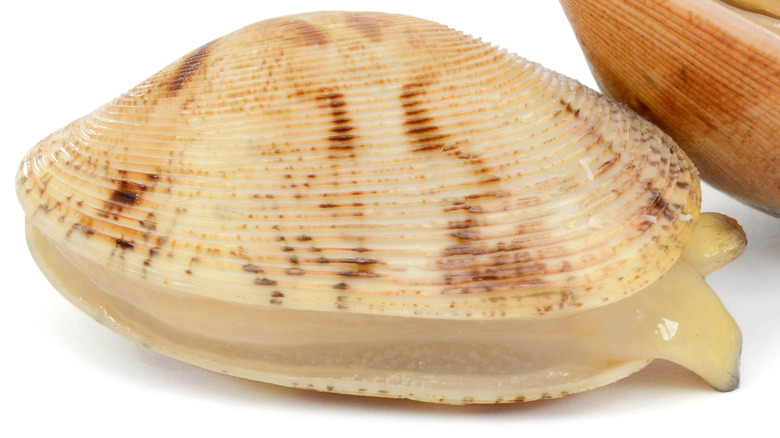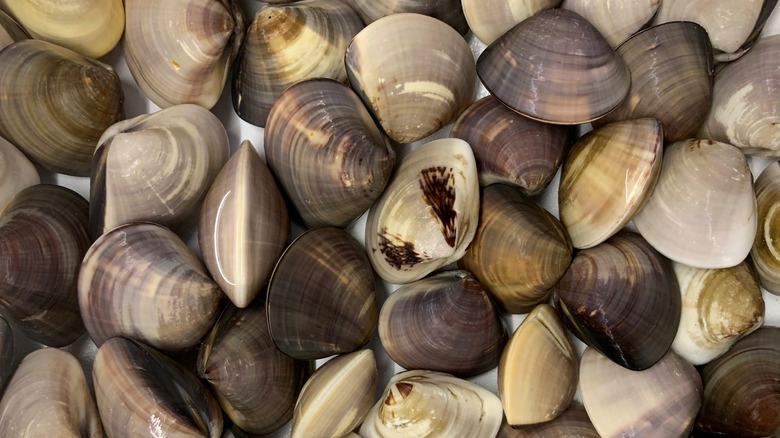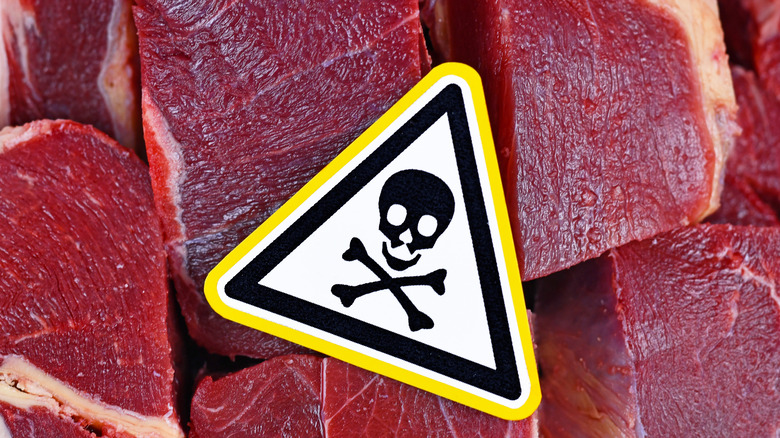Meet Meretrix Petechialis, The Clam Discovered To Produce Antibiotics
There hasn't been much research done surrounding invertebrate defense compounds, but scientists at the Institute of Oceanology of the Chinese Academy of Sciences (IOCAS) are now claiming to have found a type of clam that can produce a complicated antibiotic on its own, according to Chemistry World.
They discovered that the clam, Meretrix petechialis, synthesizes the antibiotic erythromycin, which scientists had previously believed was only produced by actinobacteria. Actinobacteria are high-GC bacteria that make their homes in a range of habitats, from marine and freshwater systems to soil and rhizosphere (a thin layer of soil that's affected by root secretions), according to ScienceDirect. They are known for producing an assortment of antibiotics, enzymes, enzyme inhibitors, signaling molecules, and immunomodulators.
But it turns out actinobacteria are not the only ones churning out antibiotics. Asiatic hard clams are apparently managing to survive in mud flat habitats full of bacteria without adaptive immune systems by producing, storing, and secreting erythromycin, per Phys.org. The clams have seemingly evolved alongside the bacteria and developed antibiotic defenses as they did.
Proving the antibiotic came from the clams
Asiatic hard clams, or Meretrix petechialis, have mucus-rich cells underneath their mantle epithelium, the latter of which has direct contact with the bacteria-laden mud flats, according to the researchers' paper, which is published in the Proceedings of the National Academy of Sciences. The team believes those cells are producing the erythromycin, which has antibacterial properties.
Sometimes, the chemical defenses surrounding marine invertebrates are made by microbial symbionts, according to Chemistry World. So the researchers had to prove that the clams themselves were producing the antibiotic, not bacteria in their environment. They used liquid chromatography coupled with mass spectrometry, immunocytochemistry, fluorescence in situ hybridization, RNA interference, and enzyme-linked immunosorbent assay to trace the erythromycin to the clams, per the paper abstract.
"This is quite astonishing work," the Goethe University biomolecular chemist Martin Grininger told Chemistry World. "It is often difficult to say where synthesis comes from, whether it is coming from bacteria living within the eukaryotic system or from the [animal] itself. They addressed this in as yet unmatched detail."
The perils of tinkering with Mother Nature
If the erythromycin is indeed synthesized in the clams themselves, that would mean it's produced by an animal tissue. And if that's the case, this discovery could pave the way for scientists to someday genetically engineer animals to make their own antibiotics, Chinese Academy of Sciences marine biologist Xin Yue told Chemistry World. Of course, the wisdom and ethics of such a move would be highly questionable. The world is already seeing an onslaught of antibiotic-resistant bacteria that evolved partially as a result of the overuse and misuse of antibiotics, according to the Cleveland Clinic. In fact, the Centers for Disease Control and Prevention now calls antimicrobial resistance by bacteria "an urgent global public health threat."
In the event that scientists did override ethical concerns and genetically engineer animals to make their own antibiotics, it is likely that bacteria would eventually evolve to evade those antibiotics. That's just one possibility to make scientists think twice before monkeying with Mother Nature.


